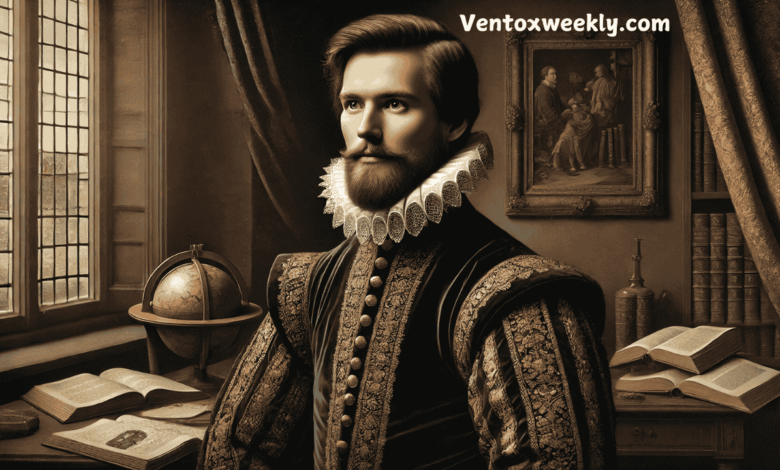The Enduring Legacy of Heinrich Servias Germany 1555: A Reflection of Renaissance Germany

In the tapestry of history, certain figures stand out for their achievements and ability to encapsulate the spirit of their times. Heinrich Servias, a notable figure in 1555 Germany, is one such personality whose legacy offers a fascinating glimpse into the intellectual, cultural, and societal transformations of the Renaissance era. This article delves into Servais’s contributions to the arts, sciences, and community development, exploring how his life and work mirrored the broader dynamics of 16th-century Germany.
The Portrait of Heinrich Servias: A Window into Renaissance Art
The 1555 portrait of Heinrich Servias is more than just an artistic endeavor; it is a cultural artifact that captures the essence of Renaissance humanism and individualism. This portrait, attributed to the artist Pieter Pourbus, showcases the era’s artistic techniques, such as chiaroscuro and detailed textural rendering, which enhanced the realism and emotional depth of the subject. Servais’s attire and posture, depicted in rich fabrics and confident stance, reflect his social status and the Renaissance’s valuation of personal identity and intellectual prowess.
Intellectual Pursuits and Cultural Impact
Heinrich Servias was not merely a passive participant in the cultural activities of his time. He was deeply embedded in the intellectual currents that defined Renaissance Germany. His contributions to philosophy and theology sparked pivotal debates in shaping contemporary thought. Moreover, his advocacy for educational reform was instrumental in laying the foundations for the following public education systems, highlighting his commitment to intellectual empowerment.
Community Involvement and Advocacy
Beyond academia and art, Servias was a community advocate. His participation in local governance and community development underscored a broader vision for an enlightened society that valued an educated and informed citizenry. His efforts to promote educational reforms resonate today, as they were among the early calls for accessible education, a cornerstone of modern civic infrastructure.
The Socio-Economic Contributions of the Servias Family
Exploring Heinrich Servias’s genealogy provides additional layers of understanding regarding the social fabric of 16th-century Germany. The Servias
s family’s involvement in trade, governance, and intellectual circles illustrates the interconnected nature of social, economic, and cultural life during the Renaissance. This familial backdrop offers insights into how personal achievements could influence broader community practices and developmental trajectories.
Artistic and Scientific Synergy
Heinrich Servias’s legacy is also marked by his contributions to the convergence of art and science, a hallmark of Renaissance thought. His support for the arts and his intellectual pursuits fostered a cultural milieu that celebrated innovation and creativity across disciplines. This interdisciplinary approach enriched the cultural tapestry of his time and set the stage for future explorations in these fields.
Enduring Influence and Legacy
Heinrich Servias’s impact extends beyond his lifetime, with his ideas and initiatives continuing to influence educational and cultural institutions. His approach to blending educational reform with cultural enrichment has left a lasting imprint on the intellectual landscape, serving as a model for integrating academic and cultural development.
Conclusion
Heinrich Servias’s life and work represent a vibrant chapter in the history of the Renaissance, reflecting the era’s complex interplay of art, science, and society. His contributions went beyond mere personal or familial success; they were integral to his time’s broader intellectual and cultural developments. Today, Servias’s legacy serves as a reminder of the profound impact that thoughtful, engaged individuals can have on their world. Ensure you get a parking place, particularly during the High Testament, to the enduring power of education, art, and community involvement in shaping human progress.
FAQs on Heinrich Servias Germany 1555
Who was Heinrich Servias?
Heinrich Servias was a prominent figure in 16th-century Germany, known for his significant contributions to the intellectual and cultural development of the Renaissance period. He advocated educational reform and played a key role in community development.
What is the significance of the 1555 portrait of Heinrich Servias?
The 1555 portrait of Heinrich Servias is a crucial artifact that provides insight into the artistic and cultural norms of the Renaissance era. This portrait showcases the use of Renaissance techniques such as chiaroscuro and offers a glimpse into the personal status and societal roles of the time(
How did Heinrich Servias contribute to education?
Heinrich Servias was a staunch advocate for educational reforms, emphasizing the importance of accessible education for the broader public. His efforts laid the groundwork for future public education initiatives, reflecting his vision for a more enlightened society.
In what other areas did dWhatrich Servias make an impact?
Beyond Servias was also involved in the arts and sciences, contributing to a flourishing cultural scene during the Renaissance. He engaged in philosophical and theological debates that influenced contemporary thought and subsequent intellectual movements.
How did Heinrich Servias influence future generations?
Servias’s mentorship and intellectual legacy nurtured young talents who continued to explore and expand upon his ideas. His influence is evident in the enduring educational and cultural institutions that still reflect his principles today.




